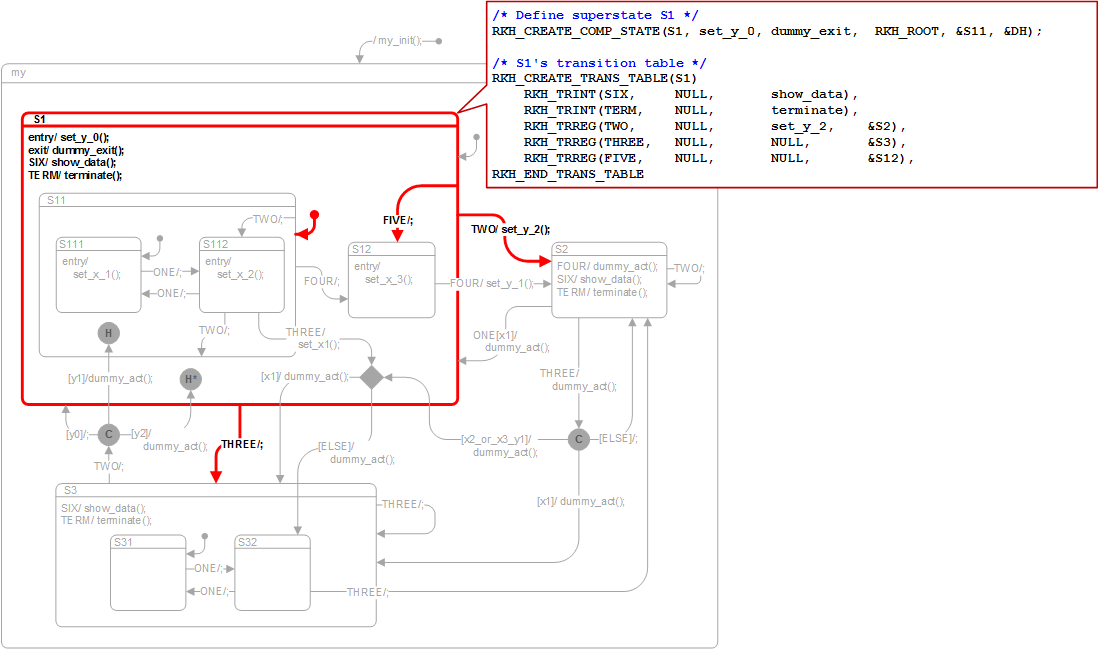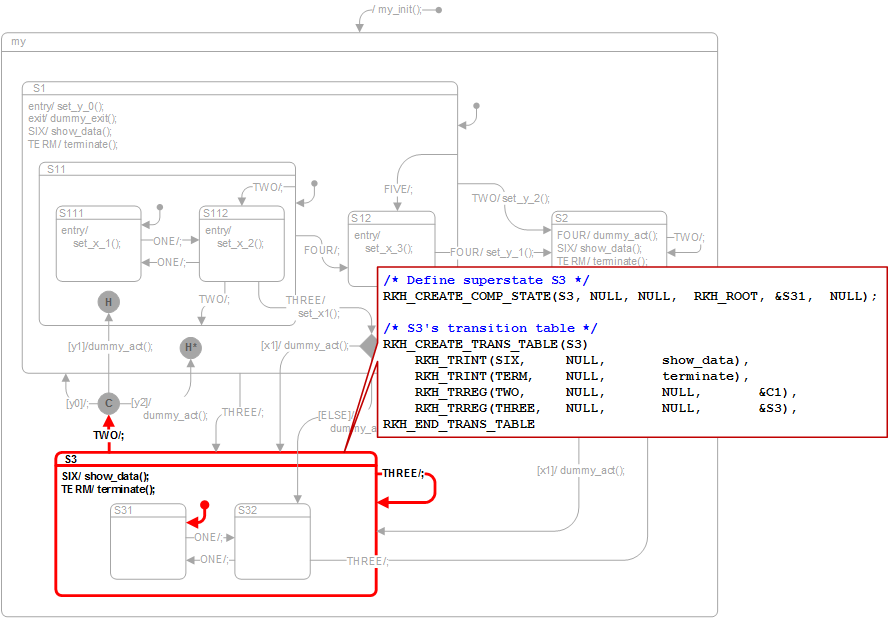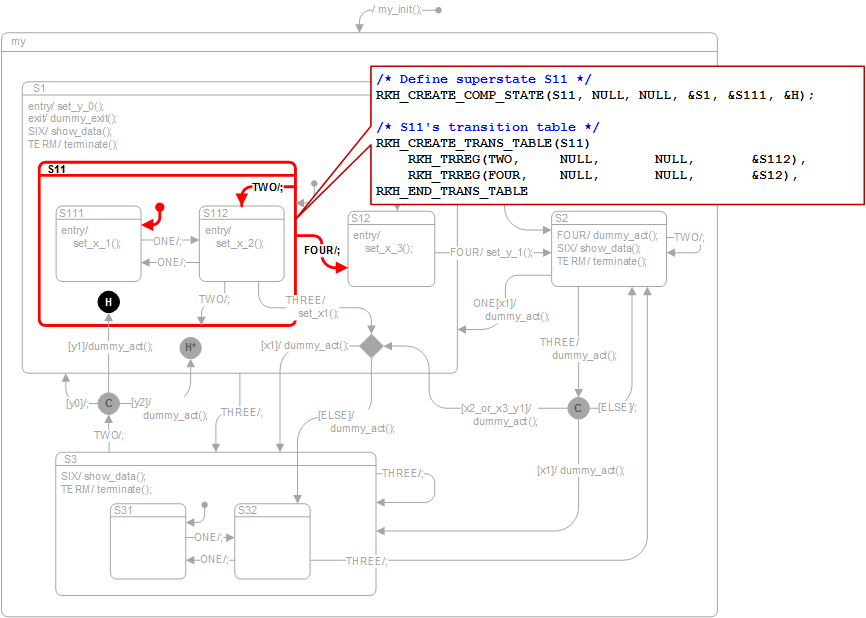- Instantiating the composite states

Prev: Instantiating the state machine
Next: Declaring the basic states
A superstate or composite state is defined with the RKH_CREATE_COMP_STATE() macro and declared with the RKH_DCLR_COMP_STATE() macro. Frequently, each state machine and its states (superstates and substates) are encapsulated inside a dedicated source file (.c file), from which the RKH_CREATE_COMP_STATE() macro is used.
The Figure 3 highlights the state "S1" and its relevant aspects. Also, shows its implementation using the RKH framework.

Defining the composite state "S1"
Declaring the composite state "S1"
Explanation
- (1) Frequently, each state machine and its states are encapsulated inside a dedicated source file (.c file), from which the RKH_CREATE_COMP_STATE() macro is used.
- (2)
S1is the state name. Represents a composite state structure. - (4)
set_y_0()defines the entry action to be executed unconditionally upon the entry to theS1state. This argument is optional, thus it could be declared as NULL. The RKH_ENT_ACT_T defines the function prototype. - (5)
dummy_exit()defines the exit action, which is executed upon exit from theS1state. This argument is optional, thus it could be declared as NULL. The RKH_EXT_ACT_T defines the function prototype. - (6)
RKH_ROOTis the parent state ofS1. If a state has no explicit superstate means that it is implicitly nested in the "top" state, and the parent state is defined by means of RKH_ROOT macro. The "top" state is a UML concept that denotes the ultimate root of the state hierarchy in a hierarchical state machine. - (7)
S11is the default state ofS1state machine. At each level of nesting, a superstate can have a private initial transition that designates the active substate after the superstate is entered directly. Here the initial transition of stateS1designates the stateS11as the initial active substate. - (8)
DHis the deep history pseudostate. This argument is optional, thus it could be declared as NULL. See RKH_CREATE_SHALLOW_HISTORY_STATE() macro and RKH_CREATE_DEEP_HISTORY_STATE().
In RKH every state is associated with a transition table, which is composed of a well-defined set of transitions. The general syntax of an expression labelling a transition in a statechart is "i[c]/a" where i is the input that triggers the transition, c is a condition that guards the transition from being taken unless it is true when i occurs, and a is an action that is carried out if and when the transition is taken. All of these parts are optional. Thus, in RKH each row in a table represents a transition, which is well-defined by an event, a guard, an action, and target state (or pseudostate). The Figure 3 shows the transition table of "S1".
The following figures, Figure 5, and Figure 6 highlights the composite states "S3", and "S11". Also, shows its implementation using the RKH framework.


Prev: Instantiating the state machine
Next: Declaring the basic states